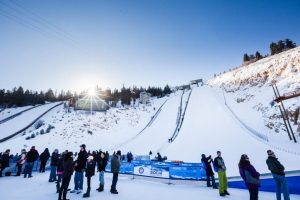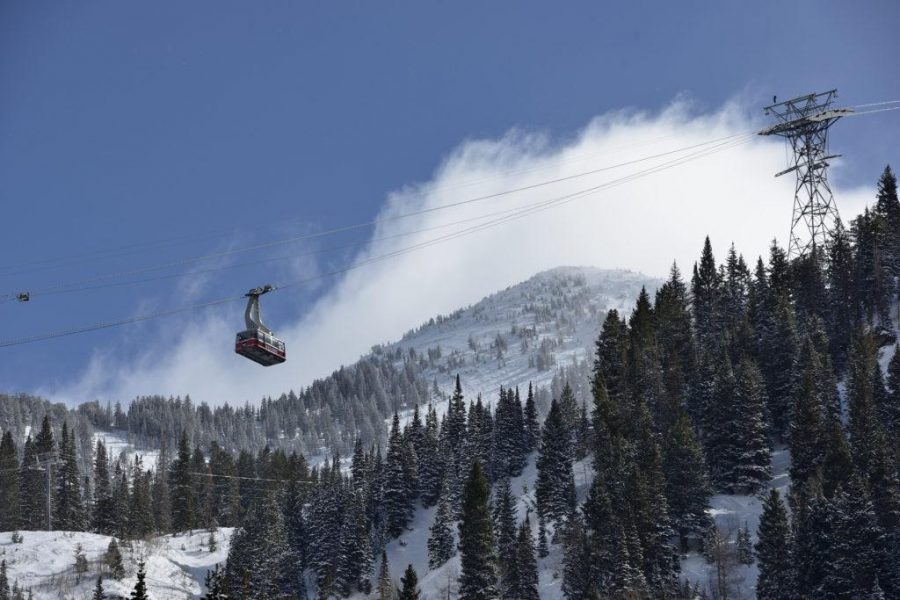The U is famed for its proximity to ski resorts and culture of winter sports. With ski season fast approaching, it’s time for U students to start buying their season passes before prices start to go up.
Utah offers a host of magnificent mountains, and boasts “the greatest snow on Earth.” Luckily for Salt Lake City residents, most of these well-established and world-famous ski resorts all lie within a half-hour drive from the U’s campus. The question is, with this many options for places to ski, which resort should students, hoping to get the most out of their money, choose for the season?
Snowbird
Snowbird, affectionately known as “The Bird,” is on the more expensive side of Utah ski areas. For college students, a chairs-only pass offering access to nearly the entire resort is now $599. Powder-hunters can upgrade to the unlimited pass for $729, which also includes access to the tram that runs from the base of the mountain to the highest point on the resort.
Though this ski area is a bit more pricey than other options, it is within convenient driving distance from the U (beating out all except Solitude in driving time). This conservation of gas-money and time is helpful to busy students. Additionally, Snowbird is considered to have the best snow in the Wasatch aside from Alta. These two neighboring mountains are some of the highest available for resort skiing, standing more than 1,000 feet taller in elevation than Park City, and with their northwestern-facing positions, they are hit by heavy cool winds and snow during the precipitation-heavy winter months. This means that Alta and Snowbird end up accumulating a larger base of snow and more powder during storms than lower resorts.
Snowbird is also known for having more challenging terrain, and though it’s not the best option for beginners, it’s an awesome resort for intermediate and advanced riders who want to further test and improve their skills. For snowboarders and people who ski with snowboarders, Snowbird is a moderately-priced option with great snow and a good big-mountain experience.
Skiable Acres: 2,500 acres
Vertical: 3,240
Summit Elevation: 11,000
Base Elevation: 7,760
Average Annual Snowfall: 500 inches
Projected Season: Nov. 19 – May 29
For more information on Snowbird season passes, visit their website here.
Alta
“Alta is for skiers.”
Alta is often considered to be a mountain of “elitists” due to its expense and its longstanding commitment to keeping out snowboarders. Despite this occasional elitist attitude, Alta, situated even higher in elevation than Snowbird, has some of the best powder in Utah. It also hosts fewer people, so the runs get skied out less quickly than at resorts like Snowbird and Brighton.
For skiers with a little bit more pocket change and a taste for big-mountain skiing and fresh tracks, a pass to Alta might be the right decision. (Prices reflect passes purchased before Sept. 28, 2016.)
Young Adult Passes (18-25) – $649
Adult Passes (26+) – $999
Skiable Acres: 2,200 acres
Vertical: 2,020
Summit Elevation: 10,550
Base Elevation: 8,530
Average Annual Snowfall: 551 inches
Projected Season: Nov. 18 – April 16
For more information on Alta season passes visit: https://buy.alta.com/season-passes
Alta/Snowbird
For skiers who want to take full advantage of what Little Cottonwood Canyon has to offer, a joint pass to both Alta and Snowbird is an option:
Family 4-pack – $2799
Adult Unlimited – $1399
Young Adult Unlimited – $1149

Park City
Park City Mountain Resort and The Canyons were recently purchased by Vail Resorts, a company which purchases and develops ski resorts and ski towns with the goal of growing their company, pleasing shareholders and providing easy and moderately priced access to great skiing across the country. The two purchased resorts were connected by a gondola and combined under one name: Park City.
Vail’s gaining possession of these ski resorts, as well as the renovations and plans they have executed within the new mega-resort, have sparked a lot of controversy, particularly among environmentalists. Without touching too deeply on the issues, Vail’s renovation of Park City has made the new resort the biggest in the United States. The combination of Park City Mountain and the Canyons results in over 7,300 acres of skiable terrain, more than triple what is offered by other Utah resorts – all this for a lower cost than any other nearby resort.
College students can purchase the Park City Youth Pass for only $399, which gives full access with minimal blackout days to the entire resort, all 7,000+ acres of it. Additionally, University of Utah students can purchase the Epic Local Pass for only $629, and the Epic Pass for $829. These more expensive pass options come with access to most or all of Vail’s other resorts, more than 10 others across the United States.
Skiable Acres: 7,300 acres
Vertical: 3,200
Summit Elevation: 10,000
Base Elevation: 6,800
Average Annual Snowfall: 370 inches
Projected Season: Nov. 18 – April 16
For more information about pass options and Epic Pass perks, see their website.
Brighton
Brighton is a small resort, nestled at the zenith of Big Cottonwood Canyon. Its altitude lends it high amounts of snowfall, and the moderate difficulty of terrain makes this well renowned ski area accessible to more beginner-intermediate skiers and snowboarders. It may be one of the smallest resorts, but for less-experienced riders, Brighton is ideal due to its accessibility to people of all skill levels.
In terms of cost, Brighton is less expensive than the bigger resorts, but still is a bit of a pocket lightener. The unlimited ski pass for adults costs $799, and the college student and young adult passes both total $499. If one has family who would like to ride with them, the family 4-pack is only $1598.
If you’re interested in a beautiful drive up to a stunningly pretty, casual day of boarding or skiing, Brighton is the place for you.
Skiable Acres: 1,050 acres
Vertical: 1,745 ft
Summit Elevation: 10,500 ft
Base Elevation: 8,755 ft
Average Annual Snowfall: 500 inches
Projected Season: Nov. 16 – April 16
For more information about pass options, see: http://www.brightonresort.com/buy-tickets/season-pass/
Big Cottonwood
Solitude is also an option, though due to its expense and minimal size it’s not recommended for college students. For skiers who would like to keep to the easier terrain and snow levels of Big Cottonwood Canyon but want more runs than what is offered by Brighton and Solitude alone, the Big Cottonwood Pass offering access to both resorts is only $839 for young adults (18-23), or $1199 for adults age 24+.
Deer Valley
Deer Valley is another resort that is likely too expensive for the terrain available for most college students, but nonetheless it is a beautiful and world famous resort, and one of the gems of Park City. A beautiful resort nestled amid some of the wealthiest neighborhood of Park City, Deer Valley gets a fairly average amount of snowfall and provides an area of terrain bigger than any resort in both of the Cottonwoods, but still smaller than Park City.
Skiers who want a more subdued, luxury ski experience can brave the expense of Deer Valley and enjoy a leisurely ski season. Adults (24+) can purchase a pass for $2,185, and young adults (18-23) can obtain one for $1,365.
Skiable Acres: 2,026 acres
Vertical: 3,000 ft
Summit Elevation: 9,570
Base Elevation: 6,570
Average Annual Snowfall: 300 inches
Projected Season: Dec. 3 – April 16
For more information about pass options, see: https://seasonpass.deervalley.com/ski-pass-options/season-passes
Students at the U have a cornucopia of ski resort options, and choosing between these wonderful choices is hard. Park City brings to the table cheap passes and significant skiable terrain (about three times more than any other resort), while Snowbird and Alta compete with high levels of snowfall and more options of advanced and technical runs. Brighton and Solitude offer accessibility for less experienced riders with plentiful powder, and Deer Valley advertises a quiet, luxurious atmosphere.
Regardless of what students choose, they should be sure to purchase passes by the end of September, else the prices will begin to rise.
c.macdonald@dailyutahchronicle.com


